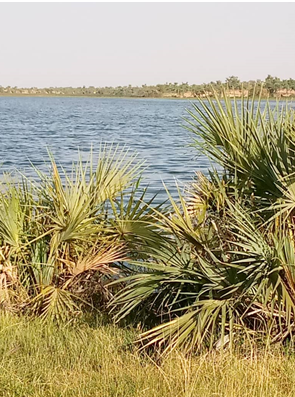Niger designates two Wetlands of International Importance

17 May 2021
Niger has named two new “Ramsar Sites”, bringing to 14 the total number in the country.
Lac de Guidimouni (Site no. 2450 on the List of Wetlands of International Importance) is located in the rural commune of Damagaram-Takaya in the Zinder Region, which receives low and unreliable annual rainfall. It is a permanent lake as it lies in a significant depression that is continuously filled by groundwater sources as well as surface water.
The Lake is surrounded by trees and shrubs, dominated by date palm Phoenix dactilifera and trees including Acacia nilotica, Faidherbia albida and Balanites aegyptiaca. The water body, however, is dominated by the invasive herbaceous plant Typha domingensis.
Prominent among the Lake’s fauna are migratory and sedentary waterbirds such as the white stork Ciconia ciconia, the grey heron Ardea cinerea, the western cattle egret Bubulcus ibis and the little egret Egretta garzetta. Reptiles such as Crocodylus niloticus and the rock monitor Varanus albigularis, and the near-threatened patas monkey Erythrocebus patas, are also present.
Over-exploitation of resources by the local communities, and variability in precipitation and temperature patterns across the Sahel region, are the main threats to the Lake’s water quality and biodiversity.
Lake Madarounfa (Site no. 2451) is the largest wetland in Maradi Region, with an estimated area that fluctuates seasonally and reaches up to 800 hectares during flood periods.
The Lake’s plant life is dominated by trees including Adansonia digitata (the baobab), Prosopis africana and Lannea microcarpa. Notable animal species include birds such as African jacana Actophilornis africanus, African sacred ibis Threskiornis aethiopicus and European roller Coracias garrulus garrulus. The Nile monitor Varanus niloticus and fish including the vulnerable Tilapia busumana are also present.
Lake Madarounfa is a prominent tourist and religious site; the wetland includes “the tombs of the 99 saints” which attract Muslim pilgrims from Niger, northern Nigeria, Senegal and Mali. The Lake is co-managed by the Department for the Environment, the Division of Madarounfa and the local communities.


